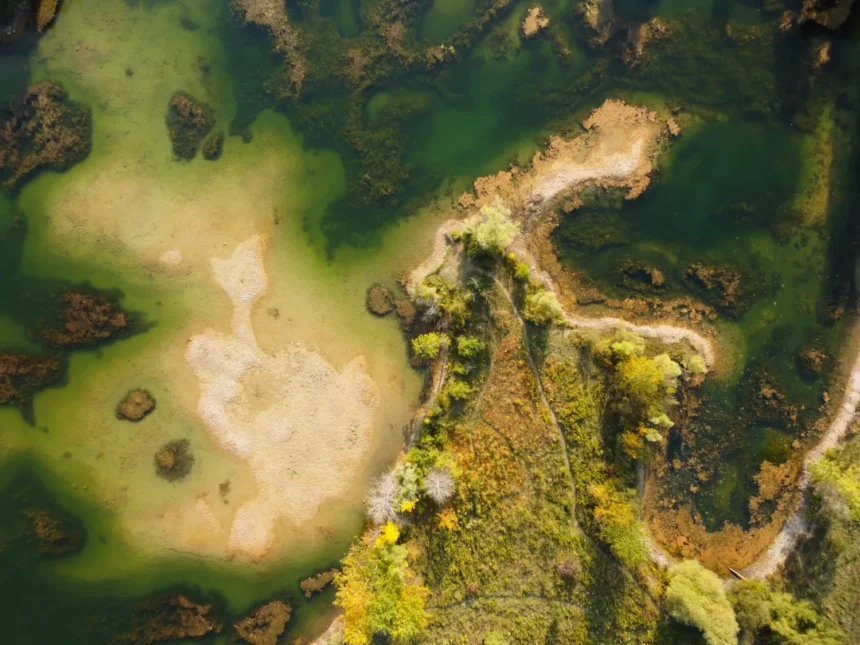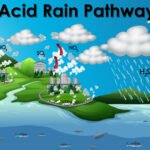In the past four decades, many lakes across the globe have developed vivid color changes. This troubling trend has scientists and environmentalists worried. According to research led by Lund University, deeper changes of hue may occur in the lakes’ ecosystems—and they might point to the effects of human endeavors and climate change.
The Importance of Lake Color
Lake color is an important indicator of lake ecological health. Color differences can indicate differences in water quality, biological activity, and certain compounds. For example, blue lakes tend to indicate clear waters with low concentrations of algae and suspended particles, meaning there is little nutrient pollution. Green or brown colors, on the other hand, typically point to higher concentrations of algae or dissolved organic matter — potentially due to nutrient runoff or other environmental conditions.
Global Assessment of Changes in Lake Colour
A study that ran through 32 million satellite images covering more than 67,000 lakes since 1984 examined how the color of lakes has changed. The new study found that only 14 percent of lakes tracked this way showed stable colors over time, meaning the majority experienced significant color changes. These changes are believed to stem from shifts in water quality, algae prevalence, and the flow of dissolved organic matter, for example.
Read also: 10 World’s Deepest Lakes: The Most Stunning Abyss of Nature
Factors Affecting the Color of Lakes
The color of lakes varies naturally and artificially over time, and lakes are dynamic ecosystems that are changing. While nutrient pollution, climate change, and land use changes are important factors in such shifts, other environmental and anthropogenic processes also contribute.
1. Sediment Load and Erosion
Heavy rainfall, deforestation, and increased construction in the vicinity of water bodies increase soil geomechanical erosion of soil, thus contributing to increased sediment loads in lakes. Too many sediments flow into lakes can make water turn brown or murky. Aside from color, the sediment influx also reduces light penetration, limiting aquatic plants and organisms.
2. By Mattias W.E. Post Dissolved Organic Matter (DOM)
Decaying leaves, plants, and soil can leach organic material into lakes, changing the color of the water. High concentrations of DOM can impart a tea-like or reddish-brown coloration to water, a phenomenon common in many forest and wetland environments.
3. Pollution from Industry and Agriculture
Runoff from industries, farms , and urban areas can wash synthetic compounds, heavy metals, and dyes into lakes. Some pollutants can react with sunlight as well, altering the chemistry of the water and producing strange colors.
4. Acid Rain and pH Imbalance
Acid rain caused by air pollution can lower the pH of the lakes. Acidic water can leach some minerals from bodies of water, so lakes may appear yellowish or milky. This shift in chemistry can also affect life under the sea.
5. Microbial Activity and Bacterial Blooms
Some microorganisms like Halobacteria and Chromatiaceae can flourish in certain environments; the specific species of microorganisms growing in a lake will dictate the lake’s color. Highly saline lakes can cause bacterial activity to turn the water pink, red, or purple.
6. Eutrophication — Nutrient Pollution
Eutrophication introduces excess nutrients, particularly phosphorus and nitrogen, into water bodies. This process promotes algae overgrowth, causing dense algal blooms that can turn the water green and lower oxygen levels, damaging aquatic life.
7. Climate Change
Global warming uplifts water temperatures, stratification, and ice cover of lake. Warmer waters can promote algal blooms and change their physical and chemical characteristics — including color — in the lakes where they form.
8. Land Use Changes
Deforestation, urbanization, and agriculture can accelerate soil extirpation and runoff, injecting sediments and nutrients into lakes. This influx can change clarity and color of the water.
Studying the different factors gives scientists a greater ability to predict, manage and mitigate environmental changes to lake ecosystems.
Regional Patterns in Variations in Lake Colors
Lake color changes differ geographically due to climate, geography, and human impacts. Higher temperatures, lower ice cover, and more abundant algal blooms have resulted in stronger color changes in areas of higher latitudes like North America and northern Europe. These regions have more pronounced seasonal changes, driving ecosystems to shift sooner. Lakes closer to the Equator and in the Southern Hemisphere appear to be much more stable owing to stable weather conditions. However, tropical regions continue to face issues with water quality due to deforestation, pollution, and agricultural runoff. Such spatial differences emphasize the complex nature of lake response to climate compared to local human impact.
Major Implications of Lake Color Changes
Lakes’ color changes have important ecological, economic, and social consequences:
● Water Quality and Public Health: Color changes can indicate declining water quality, which can cause toxic algal blooms that generate poisons dangerous to humans and wildlife.
● Biodiversity: Changes in water conditions can disrupt habitats, causing declines in native species and increases in invasive species, reducing biodiversity.
● Economic Impact: Lakes are critical for tourism, recreation, and fisheries. Degraded water quality can drive away tourists, kill recreational opportunities, and disrupt local economies that rely on them.
Read also: 10 Deepest Lakes in America: A Journey into Depth and Beauty
Some Techniques to Monitor and Manage Altering Lake Colors
Addressing these issues related to changing lake hues requires both monitoring tools and management solutions. These practices enable early problem detection and the implementation of corrective actions to protect water quality and aquatic habitats.
Advanced Monitoring Techniques
Remote Sensing: Using satellite-based remote sensing, you can monitor the long-term changes occurring in lake color and water quality. This allows scientists to monitor changes in algal blooms, sedimentation, and organic matter in whole swaths of water.
In-Situ Water Sampling: Although remote sensing offers vast-scale insights, on-site water sampling enables precise assessments of pH levels, nutrient concentrations, and microbial activity. Using both approaches guarantees complete property tracking.
AI & ML: Learn from the past: Based on historical data, predict future trends of change in lake color. This can guide policymakers toward timely interventions.
Management Approaches That Actually Work
Nutrient reduction programs — Governments can adopt tighter regulations on fertilizer use, wastewater treatment, and agricultural runoff to reduce excessive nutrients entering lakes.
Wetlands & Buffers: Grasses planted along shorelines can minimize soil erosion and filter out pollutants before they reach lakes.
Community Engagement & Education: Educating local populations about pollution prevention, responsible tourism practices, and sustainable use of freshwater resources effectively protects lakes locally.
Combining these tactics makes it easier to protect the health of lakes worldwide.
Conclusion
These widespread changes in lake colors worldwide testify to the huge influence of human activity and climate change on aquatic ecosystems. The response of the freshwater and terrestrial biota to a changing climate is critical to the conservation of freshwater, biodiversity, and the livelihoods of communities that depend on these ecosystems.





